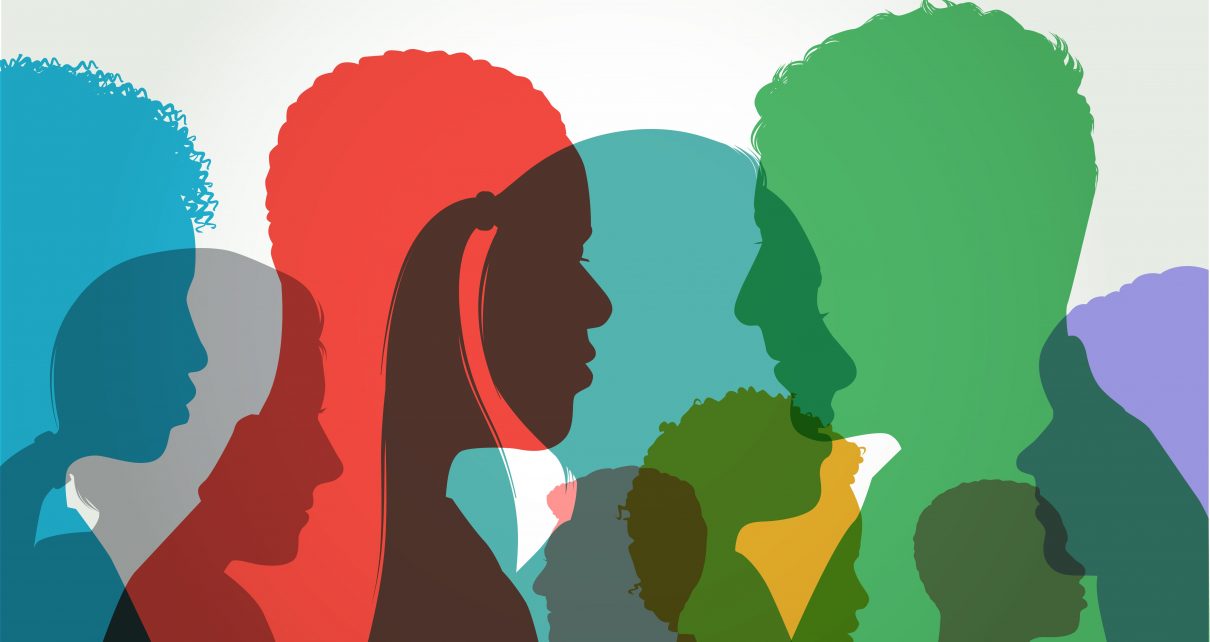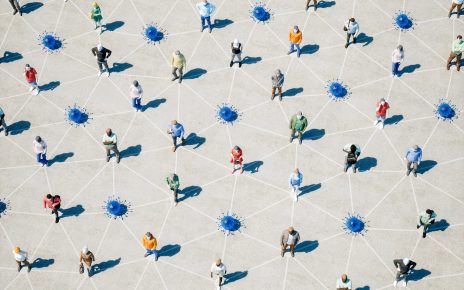Quick: Rate how much you agree with each of these items on a scale of 1 (“not me at all”) to 5 (“this is so me”):
- It is important to me that people who hurt me acknowledge that an injustice has been done to me.
- I think I am much more conscientious and moral in my relations with other people compared to their treatment of me.
- When people who are close to me feel hurt by my actions, it is very important for me to clarify that justice is on my side.
- It is very hard for me to stop thinking about the injustice others have done to me.
If you scored high (4 or 5) on all of these items, you may have what psychologists have identified as a “tendency for interpersonal victimhood.”
SOCIAL AMBIGUITY
Social life is full of ambiguity. Dates don’t always respond to your text messages, friends don’t always smile back at you when you smile at them, and strangers sometimes have upset looks on their faces. The question is: How do you interpret these situations? Do you take everything personally or do you consider that it’s more likely that your friend is just having a bad day, your new date is still interested but wants to play it cool, and that the stranger on the street was angry about something and didn’t even notice you were there?
While most people tend to overcome socially ambiguous situations with relative ease—regulating their emotions and acknowledging that social ambiguity is an unavoidable part of social life—some people tend to see themselves as perpetual victims. Rahav Gabay and her colleagues define this tendency for interpersonal victimhood as “an ongoing feeling that the self is a victim, which is generalized across many kinds of relationships. As a result, victimization becomes a central part of the individual’s identity.” Those who have a perpetual victimhood mindset tend to have an “external locus of control”; they believe that one’s life is entirely under the control of forces outside one’s self, such as fate, luck or the mercy of other people.
Based on clinical observations and research, the researchers found that the tendency for interpersonal victimhood consists of four main dimensions: (a) constantly seeking recognition for one’s victimhood, (b) moral elitism, (c) lack of empathy for the pain and suffering of others, and (d) frequently ruminating about past victimization.
It’s important to point out that the researchers do not equate experiencing trauma and victimization with possessing the victimhood mindset. They point out that a victimhood mindset can develop without experiencing severe trauma or victimization. Vice versa, experiencing severe trauma or victimization doesn’t necessarily mean that someone is going to develop a victimhood mindset. Nevertheless, the victimhood mindset and victimization do share certain psychological processes and consequences.
Also, while the four characteristics of the victimhood mindset they identified was conducted at the individual level (on a sample of Jewish Israelis) and don’t necessarily apply to the level of groups, a literature review suggests that there are some striking parallels to the collective level (which I’ll point out below).
With these caveats out of the way, let’s go a bit deeper into the main characteristics of the perpetual victimhood mindset.
THE VICTIMHOOD MINDSET
Constantly seeking recognition of one’s victimhood. Those who score high on this dimension have a perpetual need to have their suffering acknowledged. In general, this is a normal psychological response to trauma. Experiencing trauma tends to “shatter our assumptions” about the world as a just and moral place. Recognition of one’s victimhood is a normal response to trauma and can help reestablish a person’s confidence in their perception of the world as a fair and just place to live.
Also, it is normal for victims to want the perpetrators to take responsibility for their wrongdoing and to express feelings of guilt. Studies conducted on testimonies of patients and therapists have found that validation of the trauma is important for therapeutic recovery from trauma and victimization (see here and here).
A sense of moral elitism. Those who score high on this dimension perceive themselves as having an immaculate morality and view everyone else as being immoral. Moral elitism can be used to control others by accusing others of being immoral, unfair or selfish, while seeing oneself as supremely moral and ethical.
Moral elitism often develops as a defense mechanism against deeply painful emotions and as a way to maintain a positive self-image. As a result, those under distress tend to deny their own aggressiveness and destructive impulses and project them onto others. The “other” is perceived as threatening whereas the self is perceived as persecuted, vulnerable and morally superior.
While splitting the world into those who are “saints” versus those who are “pure evil” may protect oneself from pain and damage to their self-image, it ultimately stunts growth and development and ignores the ability to see the self and the world in all of its complexities.
Lack of empathy for the pain and suffering of others. People scoring high on this dimension are so preoccupied with their own victimhood that they are oblivious to the pain and suffering of others. Research shows that people who have just been wronged or who are reminded of a time when they were wronged feel entitled to behave aggressively and selfishly, ignoring the suffering of others and taking more for themselves while leaving less to others. Emily Zitek and her colleagues suggest that such individuals may feel as though they have suffered enough so they no longer feel obligated to care about the pain and suffering of others. As a result, they pass up opportunities to help those perceived to be in their outgroup.
At the group level, research suggests that increased attention to an in-group’s victimization reduces empathy toward the adversary as well as toward unrelated adversaries. Even just the priming of victimhood has been shown to increase ongoing conflicts, with the priming leading to reduced levels of empathy toward the adversary and people being more willing to accept less collective guilt for current harm. In fact, research on “competitive victimhood” shows that members of groups involved in violent conflicts tend to see their victimization as exclusive and are prone to minimize, belittle or outright deny their adversary’s suffering and pain (see here and here).
A group that is completely preoccupied with its own suffering can develop what psychologists refer to as an “egoism of victimhood,” whereby members are unable to see things from the perspective of the rival group’s perspective, are unable or unwilling to empathize with the suffering of the rival group, and are unwilling to accept any responsibility for harm inflicted by their own group (see here and here).
Frequently ruminating about past victimization. Those scoring high on this dimension constantly ruminate and talk about their interpersonal offenses and their causes and consequences rather than think about or discuss possible solutions. This may consist of expected future offenses of past offenses. Research shows that victims tend to ruminate over their interpersonal offenses ((BROKEN LINK)) and that such rumination decreases the motivation for forgiveness by increasing the drive to seek revenge.
At the group level of analysis, victimized groups tend to frequently ruminate over their traumatic events. For instance, the widespread existence of Holocaust material in Jewish Israeli school curricula, cultural products and political discourse has increased over the years. Although modern-day Jewish Israelis are generally not direct victims of the Holocaust, Israelis are increasingly preoccupied with the Holocaust, dwelling on it and fearing that it could happen again.
CONSEQUENCES OF THE MINDSET
In an interpersonal conflict, all parties are motivated to maintain a positive moral self-image. As a result, the different parties are likely to create two very different subjective realities. Offenders tend to downplay the severity of the transgression, while victims tend to perceive the offenders’ motivations as arbitrary, senseless, immoral and more severe.
Therefore, the mindset one develops—as a victim or as a perpetrator—has a fundamental effect on the way the situation is perceived and remembered. Gabay and her colleagues identified three main cognitive biases that characterize the tendency for interpersonal victimhood: interpretation, attribution and memory biases. All three of these biases contribute to a lack of a willingness to forgive others for their perceived transgressions.
Let’s dive deeper into these biases.
Interpretation Bias
The first interpretation bias involves the perceived offensiveness of a social situation. The researchers found that people with a higher tendency of interpersonal victimhood perceived both low-severity offenses (e.g., lack of help) and high-severity offenses (e.g., offensive statement regarding their integrity and personality) as more severe.
The second interpretation bias involves the anticipation of hurt in ambiguous situations. The researchers found that people with a greater tendency of interpersonal victimhood were more likely to assume that a new manager in their department would show less consideration and willingness to help them even before they actually met.
Attribution of Hurtful Behaviors
Those with a tendency for interpersonal victimhood were also more likely to attribute negative intentions on the part of the offender and were also more likely to feel a greater intensity and duration of negative emotions following a hurtful event.
These findings are consistent with work showing that the extent to which people find an interaction hurtful is related to their perception that the hurtful behavior was intentional. People with a tendency for interpersonal victimhood may experience offenses more intensely because they attribute more malicious intent to the offender than those who score lower in a tendency for interpersonal victimhood.
This bias has been found to exist at the collective level as well. Social psychologist Noa Schori-Eyal and colleagues found that those who scored higher on a “Perpetual In-group Victimhood Orientation” scale—measuring the belief that one’s in-group is constantly being victimized and persecuted by different enemies and in different time periods—had a greater tendency to categorize out-groups as hostile to the ingroup and responded faster to such categorization (suggesting it was more automatic). High scorers on this scale were also more likely to attribute malevolent intentions to out-group members in ambiguous situations; and when primed with reminders of historical group trauma, they were more likely to attribute malevolent intentions to the out-group.
It’s also noteworthy that in their study, even though most of their participants were Jewish Israelis, there was still quite a bit of variability in the degree to which people endorsed the perpetual in-group victimhood orientation. This is further evidence that just because someone has been victimized doesn’t mean that they have to view themselves as a victim. The victimhood mindset is not the same as actually experiencing collective and/or interpersonal trauma, and there exist a number of people who experienced the same trauma but refused to perceive themselves as perpetual in-group victims.
Memory Bias
Those with a greater tendency for interpersonal victimhood also had a greater negative memory bias, recalling more words representing offensive behaviors and feelings of hurt (e.g., “betrayal,” “anger,” “disappointment”), and recalling negative emotions more easily. The tendency for interpersonal victimhood was unrelated to positive interpretations, attributions or the recall of positive emotional words suggesting that it was specifically the negative stimuli that activated the victimhood mindset. These findings are in line with prior studies finding that rumination facilitates increased negative recall of events and recognition in different psychological situations.
At the group level, groups are likely to endorse and remember events that affected them the most emotionally, including events in which the ingroup was victimized by another group.
Forgiveness
The researchers also found that people with a high tendency for interpersonal victimhood were less willing to forgive others after an offense, expressed an increased desire for revenge rather than mere avoidance, and actually were more likely to behave in a revengeful manner. The researchers argue that one possible explanation for the low avoidant tendencies may be the higher need for recognition among those scoring high in a tendency for interpersonal victimhood. Importantly, this effect was mediated by perspective taking, which was negatively correlated with the tendency for interpersonal victimhood.
Similar findings have been found at the group level. A strong sense of collective victimhood is associated with a low willingness to forgive and an increased desire for revenge. This finding has been replicated in diverse contexts, including thinking of the Holocaust, the conflict in Northern Ireland and the Israeli-Palestinian conflict.
A MINDSET’S ORIGINS
Where does the victimhood mindset come from? At an individual level, many different factors most certainly play a role, including real victimization in one’s past. However, the researchers found that an anxious attachment style was a particularly strong antecedent of the tendency for interpersonal victimhood.
Anxiously attached individuals tend to be dependent on the approval and continual validation of others. They seek reassurance continually, stemming from doubts about their own social value. This leads to anxiously attached individuals seeing others in a highly ambivalent manner.
On the one hand, anxiously attached individuals anticipate rejection from others. On the other hand, they feel dependent on others to validate their self-esteem and worth. As for the direct link between anxious attachment and the tendency for interpersonal victimhood, the researchers note that “from a motivational point of view, the tendency for interpersonal victimhood seems to offer anxiously attached individuals an effective framework for constructing their insecure relations with others, which involves garnering their attention, compassion, and evaluation, and at the same time experiencing difficult negative feelings and expressing them within their relationships.”
At the group level, Gabay and her colleagues point to the potential role of socialization processes in the development of collective victimhood. They note that victim beliefs, as is the case for any other human belief, can be learned (see here and here). Through many different channels—such as education, TV programs and online social media—group members can learn that victimhood can be leveraged as a power play, and that aggressiveness can be legitimate and fair if one party has suffered. People may learn that internalizing a victimhood mentality can give them power over others and protect them from any of the consequences of online mobbing and shaming that they may impose on members of the perceived out-group.
FROM VICTIMHOOD TO GROWTH
Truth is, we currently live in a culture where many political and cultural groups and individuals emphasize their victimhood identity and compete in the “Victimhood Olympics.” Charles Sykes, author of A Nation of Victims: The Decay of the American character, noted that this stems in part from the entitlement of groups and individuals for happiness and fulfillment. Building on Sykes’ work, Gabay and her colleagues note: “When these feelings of entitlement are combined with a high individual-level tendency for interpersonal victimhood, social change struggles are more likely to take an aggressive, disparaging, and condescending form.”
But there’s the thing: If socialization processes can instill in individuals a victimhood mindset, then surely the very same processes can instill in people a personal growth mindset. What if we all learned at a young age that our traumas don’t have to define us? That it’s possible to have experienced a trauma and for victimhood to not form the core of our identity? That it’s even possible to grow from trauma, to become a better person, to use the experiences we’ve had in our lives toward working to instill hope and possibility to others who were in a similar situation? What if we all learned that it’s possible to have healthy pride for an in-group without having out-group hate? That if you expect kindness from others, it pays to be kind yourself? That no one is entitled to anything, but we all are worthy of being treated as human?
This would be quite the paradigm shift, but it would be in line with the latest social science that makes clear that a perpetual victimhood mindset leads us to see the world with rose-tinted glasses. With a clear lens, we’d be able to see that not everyone in our out-group is evil, and not everyone in our in-group is a saint. We’re all human with the same underlying needs to belong, to be seen, to be heard and to matter.
Seeing reality as clearly as possible is an essential step to making long-lasting change, and I believe one important step along that path is to shed the perpetual victimhood mindset for something more productive, constructive, hopeful and amenable to building positive relationships with others.



